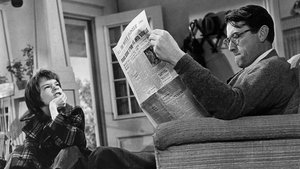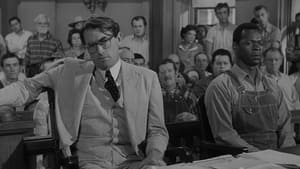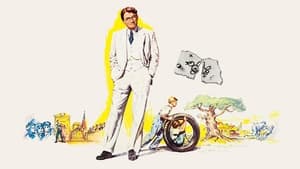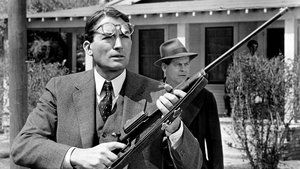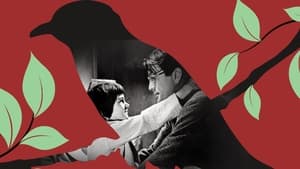Contact: [email protected]
Video Sources 0 Views
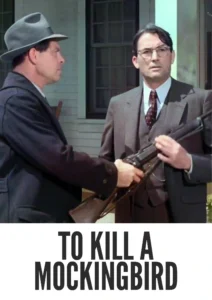
To Kill a Mockingbird 1962 First Early Colored Films Version
Synopsis
To Kill a Mockingbird (1962): A Timeless Tale of Justice and Compassion

Introduction
“To Kill a Mockingbird” (1962) stands as a timeless masterpiece that continues to resonate with audiences across generations. Directed by Robert Mulligan and based on the Pulitzer Prize-winning novel by Harper Lee, this iconic film explores themes of racial injustice, moral integrity, and the innocence of childhood in the fictional town of Maycomb, Alabama. With its powerful performances, evocative cinematography, and poignant storytelling, “To Kill a Mockingbird” remains as relevant today as it was upon its release, reminding us of the enduring importance of empathy, courage, and the pursuit of justice in the face of prejudice and bigotry.
Check The Full Colorized Movies List
Check Our Colorized Movies Trailer Channel
The Artistry of “To Kill a Mockingbird”
Mulligan’s Directorial Vision
At the helm of “To Kill a Mockingbird” is director Robert Mulligan, who brings Harper Lee’s beloved novel to life with sensitivity and grace. Drawing on his own experiences growing up in the American South, Mulligan captures the essence of Lee’s story, infusing it with authenticity and emotional resonance. Through his masterful direction, Mulligan creates a richly detailed portrait of small-town life in the Deep South, immersing viewers in the sights, sounds, and textures of Maycomb, Alabama, as seen through the eyes of its young protagonist, Scout Finch.
Stellar Performances
Central to the film’s impact are the stellar performances of its cast, led by Gregory Peck in the role of Atticus Finch, a principled lawyer who defends a black man falsely accused of raping a white woman. Peck delivers a tour de force performance, imbuing Atticus with a quiet dignity and moral integrity that resonates with audiences long after the credits roll. Supported by a talented ensemble that includes Mary Badham as Scout, Phillip Alford as Jem, and Brock Peters as Tom Robinson, Peck brings Harper Lee’s iconic character to life with nuance, depth, and humanity.
Revisiting the Storytelling Mastery: Plot and Themes
A Story of Moral Integrity
“To Kill a Mockingbird” unfolds as a powerful tale of moral integrity and social justice, as Atticus Finch courageously defends Tom Robinson, a black man unjustly accused of raping a white woman. Through Atticus’ unwavering commitment to truth and fairness, the film explores themes of racial prejudice, moral courage, and the complexities of human nature. As Atticus navigates the legal and social challenges of defending Tom in a racially divided community, he imparts invaluable lessons of empathy, compassion, and dignity to his children, Scout and Jem, and to audiences around the world.
Innocence Lost and Found
At the heart of “To Kill a Mockingbird” is the theme of innocence lost and found, as Scout and Jem confront the harsh realities of prejudice and injustice in their hometown. Through their eyes, viewers witness the complexities of race, class, and gender in the Deep South during the 1930s, as they grapple with the moral complexities of right and wrong. As they come of age in a world marked by bigotry and intolerance, Scout and Jem learn valuable lessons about empathy, compassion, and the importance of standing up for what is right, even in the face of overwhelming adversity.
The Complex Relationships in Maycomb
Father-Daughter Bond
Central to “To Kill a Mockingbird” is the bond between Atticus Finch and his daughter, Scout, whose relationship serves as the emotional heart of the film. Through their interactions, viewers witness the profound love and respect that exists between father and daughter, as Atticus imparts invaluable lessons of empathy, integrity, and moral courage to Scout. As they navigate the complexities of race, class, and gender in their hometown, Atticus and Scout form an unbreakable bond that transcends the barriers of prejudice and injustice, inspiring audiences with their unwavering commitment to truth and fairness.
Neighborly Compassion
In addition to the relationship between Atticus and Scout, “To Kill a Mockingbird” explores the theme of neighborly compassion and solidarity in the face of adversity. As Atticus defends Tom Robinson in court, he receives invaluable support from his neighbors, including Miss Maudie, Reverend Sykes, and Sheriff Heck Tate, who stand by him in his quest for justice. Through their acts of kindness and solidarity, these characters demonstrate the power of community and the importance of standing up for what is right, even when it is difficult or unpopular.
A Visual and Technical Triumph
Evocative Cinematography
Shot on location in Alabama, “To Kill a Mockingbird” boasts evocative cinematography that captures the timeless beauty and haunting atmosphere of the Deep South with breathtaking authenticity. From the sun-dappled streets of Maycomb to the shadowy corridors of the courthouse, every frame is imbued with a sense of history and tradition that transports viewers to another time and place. Through its striking use of light, shadow, and composition, the film creates a rich and immersive visual experience that enhances its emotional impact and thematic resonance.
Memorable Score
Complementing the film’s stunning visuals is the memorable score by composer Elmer Bernstein, which adds an additional layer of emotion and depth to Harper Lee’s iconic story. With its haunting melodies and stirring orchestrations, Bernstein’s score captures the spirit of the American South and the resilience of its people with grace and elegance. From the plaintive strains of the main theme to the triumphant crescendos that accompany Atticus’ closing argument in court, the score of “To Kill a Mockingbird” elevates the film to a cinematic masterpiece that lingers in the hearts and minds of audiences long after the credits roll.
Behind the Scenes of “To Kill a Mockingbird”
Mulligan’s Creative Process
Behind the camera, Robert Mulligan worked tirelessly to bring “To Kill a Mockingbird” to life with authenticity and integrity. Drawing on his own experiences growing up in the American South, Mulligan infused the film with a sense of nostalgia and longing that resonates with audiences of all backgrounds. From the casting of the actors to the design of the sets and costumes, every aspect of the production was crafted with meticulous care and attention to detail. Mulligan’s uncompromising commitment to cinematic realism and emotional truth shines through in every frame, as he transports viewers to a world of hope, compassion, and justice with breathtaking authenticity.
Collaborative Collaboration
One of the most remarkable aspects of “To Kill a Mockingbird” is the collaborative spirit that infused every aspect of its creation. From the dedicated performances of the cast to the innovative contributions of the production crew, each member of the team played a vital role in bringing Harper Lee’s beloved novel to life on the screen. Through their collective efforts, they created a cinematic experience that is as moving as it is thought-provoking, captivating audiences with its gripping narrative and unforgettable characters.
Legacy and Influence on Cinema
Critical Acclaim and Recognition
Upon its release, “To Kill a Mockingbird” received widespread critical acclaim for its bold storytelling, nuanced performances, and powerful themes. The film went on to win three Academy Awards, including Best Actor for Gregory Peck’s iconic portrayal of Atticus Finch, cementing its status as a cinematic masterpiece. Over the years, “To Kill a Mockingbird” has continued to inspire filmmakers and audiences alike, earning a place in the pantheon of great works of American literature and cinema.
Enduring Relevance
As we revisit “To Kill a Mockingbird” in the present day, its themes of racial injustice, moral integrity, and the power of empathy continue to resonate with audiences around the world. In an age marked by social and political upheaval, the film serves as a timeless reminder of the importance of standing up for what is right, even in the face of overwhelming adversity. Through its timeless narrative and universal themes, “To Kill a Mockingbird” invites viewers to confront the complexities of the human condition with courage, compassion, and dignity.
Where to Watch “To Kill a Mockingbird (1962) Full Movie”?
For those eager to experience the timeless beauty and moral resonance of “To Kill a Mockingbird” in its entirety, the film is readily available on various streaming platforms and home video releases. Whether you’re a fan of classic literature, American cinema, or simply looking for a compelling and emotionally resonant cinematic experience, “To Kill a Mockingbird” promises to captivate and inspire audiences of all backgrounds—a timeless testament to the enduring power of empathy, integrity, and the pursuit of justice in an unjust world.
In Conclusion
“To Kill a Mockingbird” (1962) stands as a timeless masterpiece that continues to captivate and inspire audiences with its powerful themes, evocative storytelling, and unforgettable characters. Through its poignant exploration of racial injustice, moral integrity, and the innocence of childhood, the film invites viewers to confront the complexities of the human condition with courage, compassion, and dignity. As we revisit this iconic classic, let us celebrate its enduring legacy and appreciate its timeless relevance in an ever-changing world.
